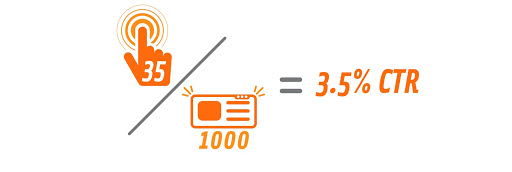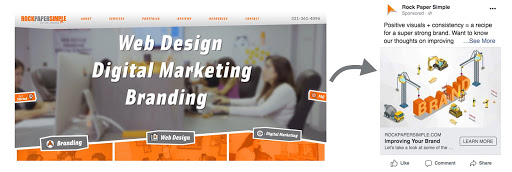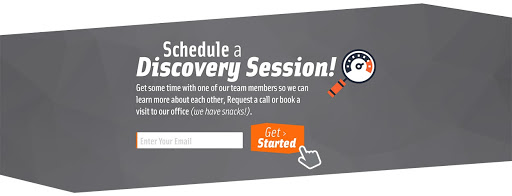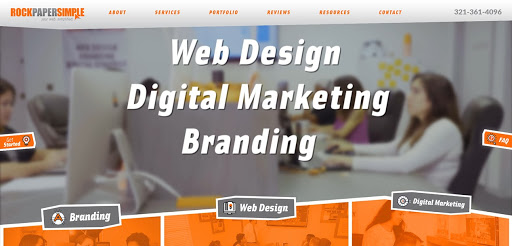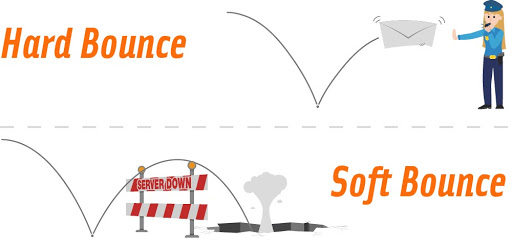1. CPA (Cost Per Acquisition)
We use CPA to measure the cost of acquiring a customer. We obtain this number by determining the overall campaign cost against the number of conversions generated. This is a critical metric as a high CPA can cut into profits. Having a target for your CPA is a good litmus for evaluating any new marketing campaign.
2. CPI (Cost Per Impression)
CPI simply measures how many eyeballs have been in your advertisement. Many advertising platforms use this billing method combined with CPM, or cost per thousand. A high CPI is not necessarily a bad thing, and a low CPI isn’t inherently good. Since some views are more likely to become customers, a high CPI may have a lower CPA than a low CPI that has a low likelihood of closing the customer.
Impressions are vital to business growth from more than just a conversion standpoint. Every time someone sees your brand, you create more touchpoints and familiarity with the company.
3. A/B Split Testing
Split testing is the process of running two versions of the same marketing collateral at the same time to see which one performs better. This can be utilized on landing pages, postcards, social media advertising, and nearly any marketing platform. One crucial component of Split testing is not to switch too many variables at once. If you’re testing different headlines on an email marketing campaign, don’t also try sending it to drastically different audiences as you won’t be able to pinpoint which variable leads to the campaign’s results.
4. Lookalike Audiences
Lookalike audiences are a group of individuals that mirror characteristics of existing customers or website visitors. Lookalike audiences are used predominantly on Facebook and Google advertising. These audiences are generated by tracking data and uploaded customer lists. The power behind lookalike audiences is their high likelihood of interest in your product, and the fact that they’re more likely to have a lower CPA than a broader advertising campaign.
5. KPI (Key Performance Indicator)
KPI’s are the backbone of marketing success. A KPI can be anything with which we measure performance like click-through rate, whitepaper downloads, or sales.
6. Lead Generation/Lead Magnet/Lead Nurturing
Lead Generation is the process of creating leads through advertising and other forms of marketing like SEO.
Lead magnets are part of this process. A lead magnet is typically a free offering given to pull prospects into your lead generation process. This can be an e-book giveaway where users have to enter their email to obtain access, a guide, access to a course, or anything similar.
Lead Nurturing is the process of taking the leads captured through your lead magnet and engaging with them through email marketing, social media advertising, and content marketing until they’re ready to make a purchase.
7. CTR (Click Through Rate)
Click-through rates can make or break advertising campaigns. Calculated as a percentage, it refers to the likelihood of someone that has seen your ad to click on it. To get this percentage, take the total number of clicks received and divide by the number of impressions.
8. Engagement Rate
Engagement rate refers to the likelihood your followers like, comment, and share your content. It also has a vast application in the world of SEO. Content that has a higher engagement rate is going to be recognized as high quality by Google and rewarded with better rankings.
9. Remarketing
Have you ever looked at a mattress or a tennis racket on a website, but instead of purchasing, you jump over to Facebook, where there is an ad for that specific tennis racket or bed? You were just remarketed.
Remarketing tracks users who click on a website, and then targets them with advertising related to the pages that they clicked on.
By setting up ads for every product that your company sells, you can create ads specific to each offering. By hyper-targeting through remarketing, you substantially increase your chances of a purchase decision.
10. Relevancy Score & Quality Score
Relevancy score and quality score function in the same way. They measure how well targeted your advertising is to people you are advertising to. Advertising blue cars to people who only like red ones would yield bad scores, while talking about how your company sells cars with the best red paint in the industry would create fantastic scores.
There is only one difference between both metrics: Relevancy is used by Facebook, while quality is used by Google.
The importance of both scores cannot be overlooked. Lower scores lead to lower CPA and lower costs across the board.
11. B2B & B2C
B2B stands for business-to-business, while B2C stands for the business-to-consumer.
B2B is usually a more professional sale where solutions and products essential to another business’ success are sold. Component manufacturers and accounting firms would fall into this market. B2C is usually more closely aligned to retail or services like plumbing.
The approach to marketing to each segment should be unique as the needs of the end consumer are different. B2C can involve more social media marketing, while B2B may rely more heavily on blogging.
12. CTA (Call To Action)
A call to action is basically the “next step” on any advertisement, landing page, or email. The idea behind the CTA is for the prospect to continue down the lead funnel. The CTA can take the form of submitting an email address, requesting a quote, or making a purchase.
When utilizing a CTA, it should always be easy to find. Since it’s the focal point of the marketing piece, it should also be the focal point of the overall design.
13. Pixel
The pixel is a piece of tracking code generated by Facebook that gathers information on your visitors and monitors the performance of your advertising. The power of the pixel is its ability to create lookalike audiences and retarget people that have already visited your product page.
14. Thank You Page
We’ve all seen a thank you page on websites throughout the years. Surprisingly, this page has a hidden marketing advantage.
Through the Facebook pixel and Google Analytics, Google’s version of the pixel, you can track who has visited your thank you page. People that have visited that page are only those who have performed a specific action like making a purchase or downloading a content offer. By utilizing this data, users can be targeted with advertising that matches where they are on the buyer’s journey.
15. SEO
Search engine optimization is the overall optimization and strategy to get websites to rank for search terms in Google. While there are many pieces and strategies to SEO, it comes down to four core components: the code of the site, the content on the site, what other sites think about your site, and user experience.
SEO is a long-term process, but it is one of the most rewarding and trustworthy ways to market your business as it can’t be cheated or bought.
16. PPC
Pay per click, or PPC, is the inverse of SEO. Instead of working hard to rank content, you can pay to have your advertisement boosted to the top of search terms. PPC works exceptionally well in many industries like lead generation and high ticket sales, but it can be costly for companies with lower dollar value products.
The most popular and effective PPC platforms are Google Ads and Facebook Advertising.
17. Blogging
Blogging falls under the “content on the site” part of SEO, and it is one of the most critical components. If there isn’t any content worth accessing on your site, people won’t want to visit it. If people don’t want to visit your site, Google won’t rank it.
Blogging can sometimes seem like a weird thing for a business to do, but at the end of the day, a blog should answer the questions your customers have. By being helpful throughout the buying process, your site will build trust with prospects and ranking.
18. Bounce Rate
Bounce rate refers to anytime a user visits your website but only views one page. This typically happens when the content on the page that they’ve opened wasn’t relevant, interesting, or useful.
Every page will have some individuals that increase your bounce rate, but the goal is to reduce this rate and be more effective at delivering value through your marketing content.
19. Above The Fold
“Above the fold” content refers to everything that appears on a website before a user scrolls down. This is an essential section of your site as it is typically a distinguisher between a visitor bouncing or sticking around.
Your core offering, H1 tag, and most important call to action should all appear above the fold. If the customer doesn’t understand the purpose of your site immediately, they will likely bounce.
20. List Segmentation
List segmentation refers to the process of splitting your email lists up by specific variables. These variables can be anything from age, likelihood to purchase, or deal size; they allow you more granularity in your marketing.
This process can be automated, permitting list utilization when needed. At Rock Paper Simple, we create email automation based on segmented lists. When new users sign up on your website, or when a returning customer visits your site, they get sent a personalized email related to their actions.
21. Bounce Rate
A bounce rate in email marketing is slightly different than a bounce rate on a website. This bounce rate refers to the percentage of emails that weren’t delivered as part of an email marketing campaign.
A bounce can be split up into two categories that we’ll explain below: a hard bounce and a soft bounce.
22. Hard Bounce
Every email campaign has some bounce rate, that’s just the nature of the platform; however, it’s important to know why your emails bounced. This understanding helps address the problem to prevent it from growing.
A hard bounce refers to emails that simply weren’t delivered. Failed delivery can result from an incorrectly spelled email address or communications being blocked by the recipient.
High levels of hard bounces are one of the many reasons that it’s better to build your email list rather than purchasing one from a third-party provider.
23. Soft Bounce
A soft bounce is slightly different than a hard bounce. A soft bounce occurs when an email is undeliverable due to a full inbox, or if the recipient’s server was down at the time the email was sent.
In many cases, your email system will continue to try and deliver the email for a little while before eventually removing the email from the list.
24. Total Opens
Total opens refers to the number of people that have opened an email. The more total opens in relation to the number of emails on your list points to a stronger email campaign.


